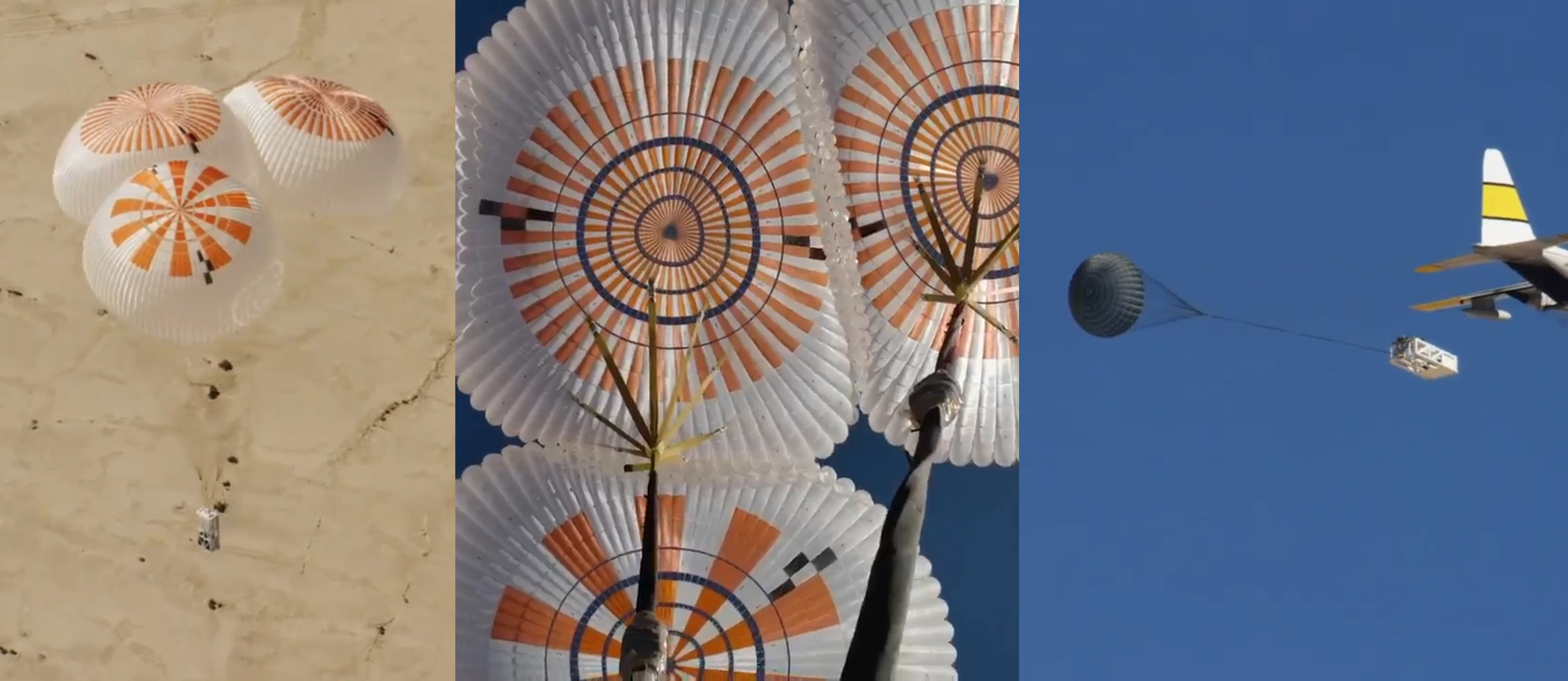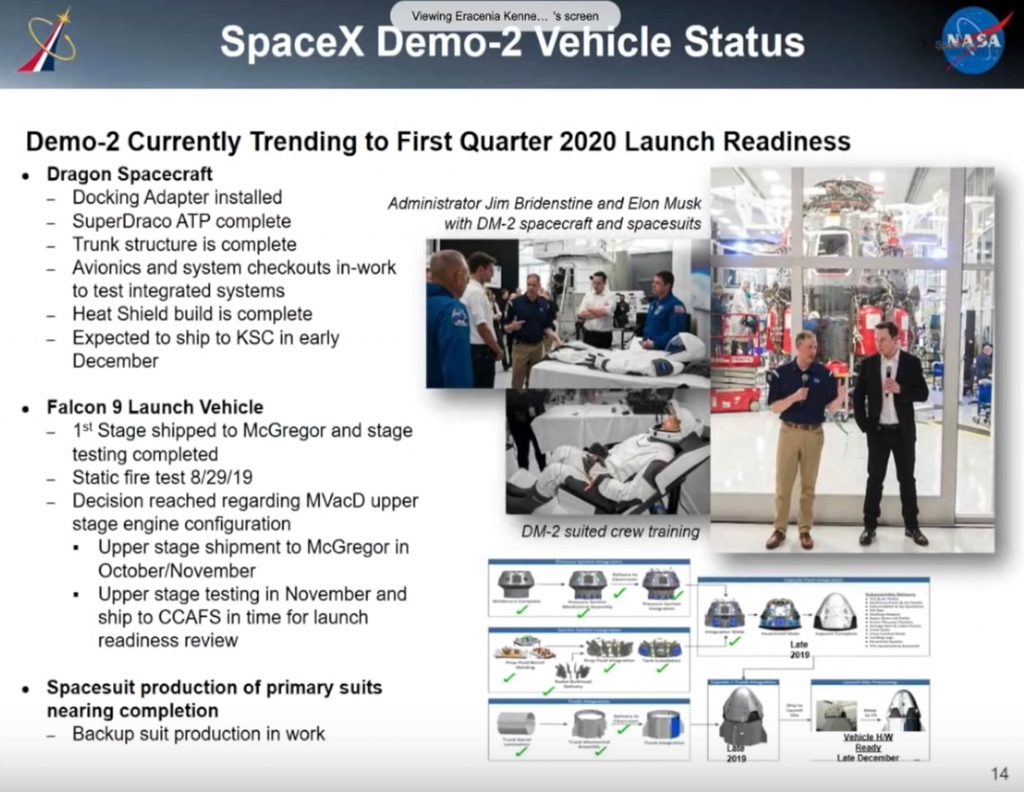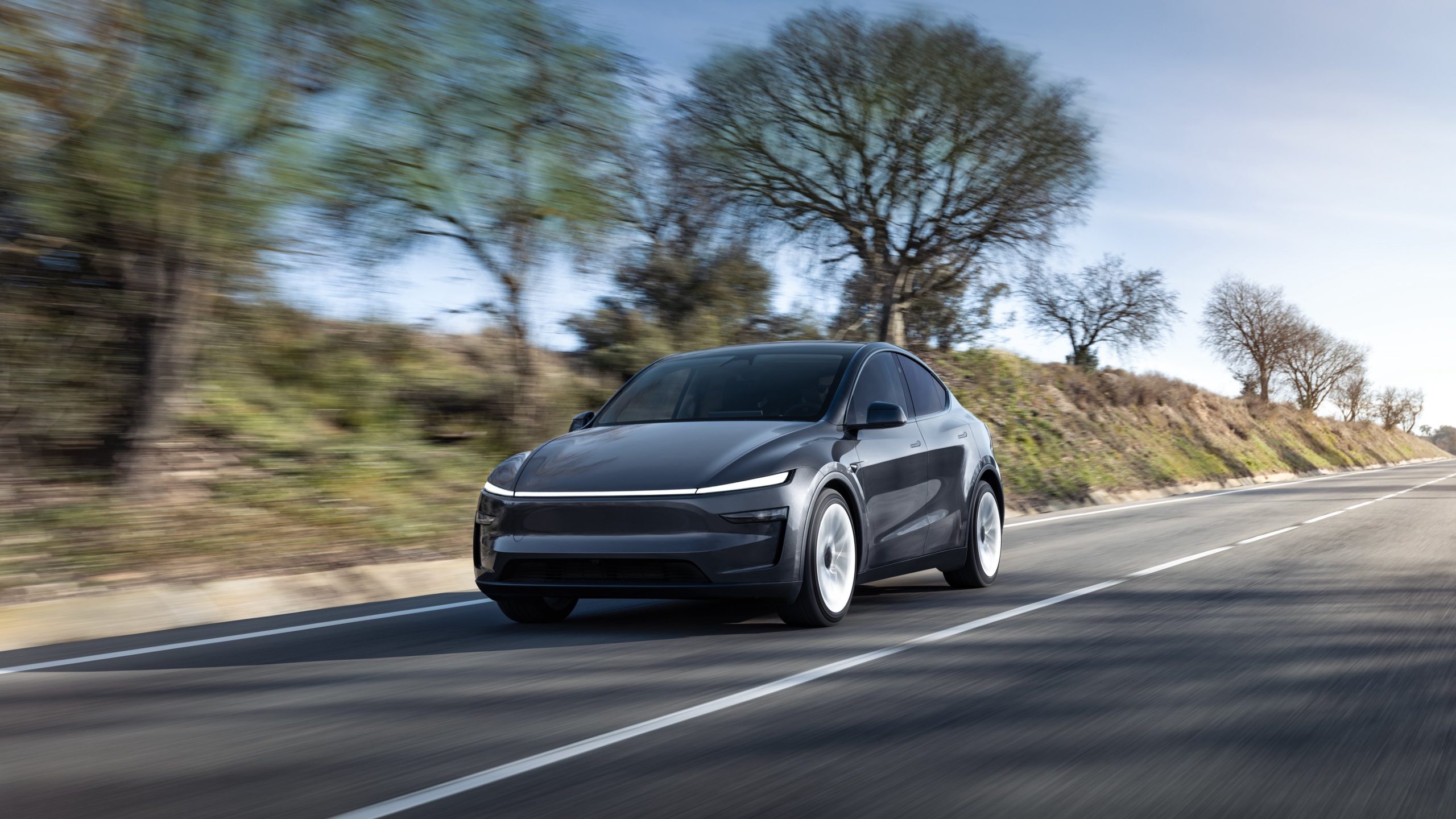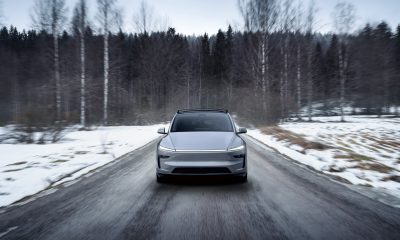

News
SpaceX says Crew Dragon parachute upgrade nailed more than a dozen tests in a row
According to SpaceX, Crew Dragon’s upgraded ‘Mk3’ parachutes have successfully completed more than a dozen tests in a row, a feat accomplished by SpaceX engineers and technicians in a single week.
Although SpaceX will likely continue to test the upgraded parachutes over the next several weeks and months, Mk3’s success up to now – including a demonstration of an emergency landing scenario – likely means that the company is well on track for NASA to certify Crew Dragon for its first astronaut launch.
Known as Demo-2, SpaceX’s first crewed demonstration mission is tentatively scheduled to launch no earlier than the first quarter of 2020 and is almost entirely dependent upon NASA (and SpaceX, to a lesser extent) completing review and qualification paperwork. On October 8th, SpaceX CEO Elon Musk indicated that SpaceX itself – including all Crew Dragon and Falcon 9 hardware – would likely be ready to launch before the end of December 2019.

During an October 30th briefing from Commercial Crew Program manager Kathy Lueders, NASA essentially confirmed Musk’s estimate for Crew Dragon hardware readiness, estimating that the Crew Dragon Demo-2 spacecraft will be ready for flight around the end of December. The mission’s Falcon 9 booster has also completed testing in Texas, while SpaceX plans to ship the Falcon 9 upper stage to Texas for acceptance testing in November.
In recent months, NASA has indicated that the parachute systems of both Boeing’s Starliner and SpaceX’s Crew Dragon were a prominent concern after chute failures occurred on several occasions. In response, SpaceX redesigned Crew Dragon’s parachutes – supplied by Airborne Systems – to account for the failure modes experience, while also advancing the state of the art of computer modeling of parachute deployment and behavior.
In response to past failures, SpaceX chose to further upgrade and strengthen Crew Dragon’s parachutes, moving to a ‘Mk3’ variant with stronger Zylon risers (strips connecting Dragon to its parachute rigging), among other tweaks. Notably, in an October 2019 press conference with Musk, NASA administrator Jim Bridenstine noted that SpaceX had plans to field and test those Mk3 parachutes at least 10 times before the end of 2019.
“We could see as many as 10 drop tests between now and the end of the year and depending on how the next 10 drop tests go, we will know how many more drops tests we are going to add.”
Jim Bridenstine, October 10th, 2019
In fact, during the latest stage of testing, SpaceX says it successfully completed thirteen consecutive tests of Crew Dragon’s new Mk3 parachutes, all of which were completed in less than two weeks. This essentially blows Bridenstine’s expectations out of the water, as SpaceX has surpassed his predicted 10 tests and done so barely three weeks into the tentative 12-week window he set. SpaceX now has plenty of time to either continue testing Crew Dragon’s parachutes or refocus its efforts on other equally important qualification challenges.
Prior to those thirteen consecutive successes, SpaceX suffered two failures during single-parachute Mk3 testing. The first two development tests of the Mk 3 design used loads much higher than the parachutes would ever see in operation in an effort to better understand overall design margins and system performance. After a period of rapid iteration with parachute provider Airborne Systems, the faults responsible for those two stress-test failures were resolved and subsequent drop tests confirmed that Mk3’s suspension lines – the numerous lines connecting the parachute to Crew Dragon – are far stronger than those on Mk2.
Perhaps most crucially, the most recent test – shown in the video shared by SpaceX on November 3rd – was the first multi-chute Mk3 demonstration and simultaneously proved that Crew Dragon will be able to safely land its astronaut passengers even if one of the spacecraft’s four parachutes fail to deploy. Despite those consecutive successes, SpaceX and Airborne will continue testing Mk3 parachutes as rapidly as possible and aim to provide NASA the data it needs to qualify Crew Dragon’s parachutes for crewed flight before the end of 2019.
Either way, the next several months are set to be a frenetic period for NASA’s Commercial Crew Program. As early as November 4th, Boeing aims to attempt a pad abort test of its Starliner spacecraft, while SpaceX is set to static fire a Crew Dragon capsule on November 6th. If both tests are successful, SpaceX aims to launch Crew Dragon’s In-Flight Abort (IFA) test in early-December, while Boeing hopes to launch Starliner on its first uncrewed Orbital Flight Test (OFT) no earlier than December 17th.
Check out Teslarati’s Marketplace! We offer Tesla accessories, including for the Tesla Cybertruck and Tesla Model 3.
News
Tesla UK sales see 14% year-over-year rebound in June: SMMT data
The SMMT stated that Tesla sales grew 14% year-over-year to 7,719 units in June 2025.

Tesla’s sales in the United Kingdom rose in June, climbing 14% year-over-year to 7,719 units, as per data from the Society of Motor Manufacturers and Traders (SMMT). The spike in the company’s sales coincided with the first deliveries of the updated Model Y last month.
Model Y deliveries support Tesla’s UK recovery
Tesla’s June performance marked one of its strongest months in the UK so far this year, with new Model Y deliveries contributing significantly to the company’s momentum.
While the SMMT listed Tesla with 7,719 deliveries in June, independent data from New AutoMotive suggested that the electric vehicle maker registered 7,891 units during the month instead. However, year-to-date figures for Tesla remain 2% down compared to 2024, as per a report from Reuters.
While Tesla made a strong showing in June, rivals are also growing. Chinese automaker BYD saw UK sales rise nearly fourfold to 2,498 units, while Ford posted the highest EV growth among major automakers, with a more than fourfold increase in the first half of 2025.
Overall, the UK’s battery electric vehicle (BEV) demand surged 39% to to 47,354 units last month, helping push total new car sales in the UK to 191,316 units, up 6.7% from the same period in 2024.
EV adoption accelerates, but concerns linger
June marked the best month for UK car sales since 2019, though the SMMT cautioned that growth in the electric vehicle sector remains heavily dependent on discounting and support programs. Still, one in four new vehicle buyers in June chose a battery electric vehicle.
SMMT Chief Executive Mike Hawes noted that despite strong BEV demand, sales levels are still below regulatory targets. “Further growth in sales, and the sector will rely on increased and improved charging facilities to boost mainstream electric vehicle adoption,” Hawes stated.
Also taking effect this week was a new US-UK trade deal, which lowers tariffs on UK car exports to the United States from 27.5% to 10%. The agreement could benefit UK-based EV producers aiming to expand across the country.
News
Tesla Model 3 ranks as the safest new car in Europe for 2025, per Euro NCAP tests
Despite being on the market longer than many of its rivals, the Tesla Model 3 continues to set the bar for vehicle safety.

The Tesla Model 3 has been named the safest new car on sale in 2025, according to the latest results from the Euro NCAP. Among 20 newly tested vehicles, the Model 3 emerged at the top of the list, scoring an impressive 359 out of 400 possible points across all major safety categories.
Tesla Model 3’s safety systems
Despite being on the market longer than many of its rivals, the Tesla Model 3 continues to set the bar for vehicle safety. Under Euro NCAP’s stricter 2025 testing protocols, the electric sedan earned 90% for adult occupant protection, 93% for child occupant protection, 89% for pedestrian protection, and 87% for its Safety Assist systems.
The updated Model 3 received particular praise for its advanced driver assistance features, including Tesla’s autonomous emergency braking (AEB) system, which performed well across various test scenarios. Its Intelligent Speed Assistance and child presence detection system were cited as noteworthy features as well, as per a WhatCar report.
Other notable safety features include the Model 3’s pedestrian-friendly pop-up hood and robust crash protection for both front and side collisions. Euro NCAP also highlighted the Model 3’s ability to detect vulnerable road users during complex maneuvers, such as turning across oncoming traffic.
Euro NCAP’s Autopilot caution
While the Model 3’s safety scores were impressive across the board, Euro NCAP did raise concerns about driver expectations of Tesla’s Autopilot system. The organization warned that some owners may overestimate the system’s capabilities, potentially leading to misuse or inattention behind the wheel. Even so, the Model 3 remained the highest-scoring vehicle tested under Euro NCAP’s updated criteria this year.
The Euro NCAP’s concerns are also quite interesting because Tesla’s Full Self-Driving (FSD) Supervised, which is arguably the company’s most robust safety suite, is not allowed for public rollout in Europe yet. FSD Supervised would allow the Model 3 to navigate inner city streets with only minimal human supervision.
Other top scorers included the Volkswagen ID.7, Polestar 3, and Geely EX5, but none matched the Model 3’s total score or consistency across categories. A total of 14 out of 20 newly tested cars earned five stars, while several models, including the Kia EV3, MG ZS, and Renault 5, fell short of the top rating.
Elon Musk
Why Tesla’s Q3 could be one of its biggest quarters in history
Tesla could stand to benefit from the removal of the $7,500 EV tax credit at the end of Q3.

Tesla has gotten off to a slow start in 2025, as the first half of the year has not been one to remember from a delivery perspective.
However, Q3 could end up being one of the best the company has had in history, with the United States potentially being a major contributor to what might reverse a slow start to the year.
Earlier today, the United States’ House of Representatives officially passed President Trump’s “Big Beautiful Bill,” after it made its way through the Senate earlier this week. The bill will head to President Trump, as he looks to sign it before his July 4 deadline.
The Bill will effectively bring closure to the $7,500 EV tax credit, which will end on September 30, 2025. This means, over the next three months in the United States, those who are looking to buy an EV will have their last chance to take advantage of the credit. EVs will then be, for most people, $7,500 more expensive, in essence.
The tax credit is available to any single filer who makes under $150,000 per year, $225,000 a year to a head of household, and $300,000 to couples filing jointly.
Ending the tax credit was expected with the Trump administration, as his policies have leaned significantly toward reliance on fossil fuels, ending what he calls an “EV mandate.” He has used this phrase several times in disagreements with Tesla CEO Elon Musk.
Nevertheless, those who have been on the fence about buying a Tesla, or any EV, for that matter, will have some decisions to make in the next three months. While all companies will stand to benefit from this time crunch, Tesla could be the true winner because of its sheer volume.
If things are done correctly, meaning if Tesla can also offer incentives like 0% APR, special pricing on leasing or financing, or other advantages (like free Red, White, and Blue for a short period of time in celebration of Independence Day), it could see some real volume in sales this quarter.
You can now buy a Tesla in Red, White, and Blue for free until July 14 https://t.co/iAwhaRFOH0
— TESLARATI (@Teslarati) July 3, 2025
Tesla is just a shade under 721,000 deliveries for the year, so it’s on pace for roughly 1.4 million for 2025. This would be a decrease from the 1.8 million cars it delivered in each of the last two years. Traditionally, the second half of the year has produced Tesla’s strongest quarters. Its top three quarters in terms of deliveries are Q4 2024 with 495,570 vehicles, Q4 2023 with 484,507 vehicles, and Q3 2024 with 462,890 vehicles.
-

 Elon Musk4 days ago
Elon Musk4 days agoTesla investors will be shocked by Jim Cramer’s latest assessment
-

 News1 week ago
News1 week agoTesla Robotaxi’s biggest challenge seems to be this one thing
-

 Elon Musk2 weeks ago
Elon Musk2 weeks agoFirst Look at Tesla’s Robotaxi App: features, design, and more
-

 News2 weeks ago
News2 weeks agoSpaceX and Elon Musk share insights on Starship Ship 36’s RUD
-

 News2 weeks ago
News2 weeks agoWatch Tesla’s first driverless public Robotaxi rides in Texas
-

 News1 week ago
News1 week agoWatch the first true Tesla Robotaxi intervention by safety monitor
-

 News2 weeks ago
News2 weeks agoTesla has started rolling out initial round of Robotaxi invites
-

 Elon Musk2 weeks ago
Elon Musk2 weeks agoTesla to launch in India in July with vehicles already arriving: report


















